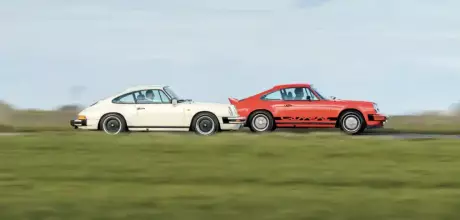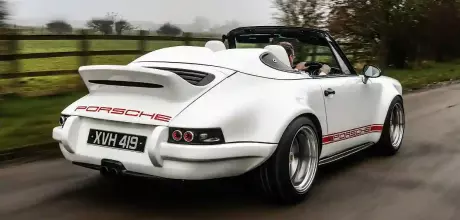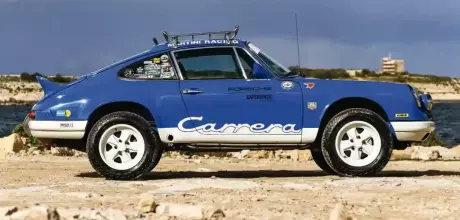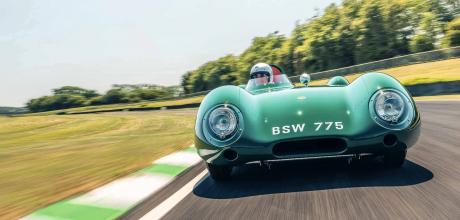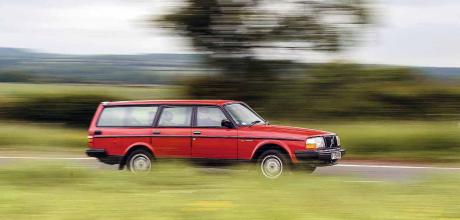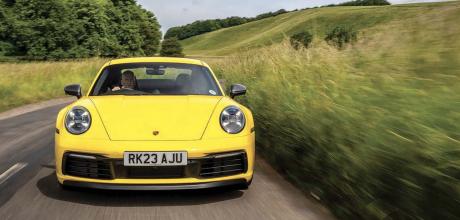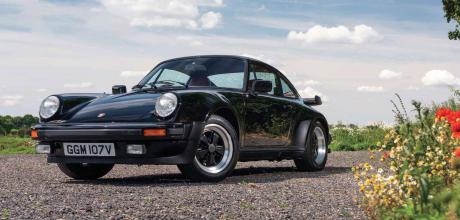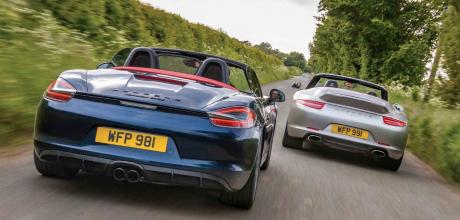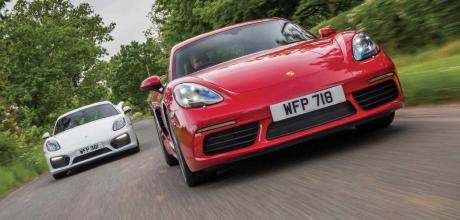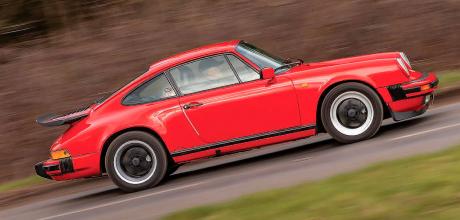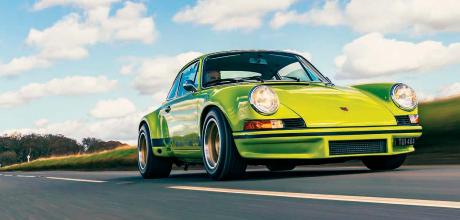Porsche 911 G-Series and 930 → From 1974 Porsche 911 Carrera 2.7 to 1989 911 SC: why these are the 911s to buy now
Editor's comment
The 911s that make sense
When I was a pup – well, probably in my teens, which means my opinions were even more virulent yet even more unfounded – I didn’t much care for new Porsche 911s. You couldn’t blame me: I was born in 1968, so when I was most full of revolution and rebellion and looking for a system to smash, 911s were at their new-establishment peak, that thankfully brief window in the mid-80s when all the cliches were formed. Red-braces wearing yuppie a-holes going backwards into hedges in matching Guards Red impact-bumper 911s while swilling from a bottle of Pol was real (though perhaps rather less frequent than the tabloids made out). As was the 911’s guilt by association, sadly.
By the time I got into the classic car magazine game in the mid-90s, the big-bumper generation of Porsche was still unfashionable, all too often the cars were uncared for and poorly maintained daily drivers at the bottom of their value curve. They were what you bought if you couldn’t afford a ‘proper’ Porsche.
To those of us of a certain age, I guess they still are to a lesser degree, but to an only slightly younger generation of enthusiasts, the one that has also embraced all those 1970s shades of brown that still make my blood curdle – russet, sable, oatmeal et al – there seems to be no trace of that stigma. Of course, you suspect that they might change their minds the moment they have the wherewithal to test drive a 1968 S, but for now I am quite jealous that they can enjoy the later cars without all the social baggage that used to come with them, used to spoil them. That’s partially a comment on how quickly society and perceptions move on in the modern world, but mainly it’s testament to the longevity of a brilliant design.
Heck, the cars we are rightly celebrating this issue were in production so long that they easily outlived their own negative stereotypes in period. They emerged in 1974 and bowed out in 1989, they pretty much saw off their own succession plan when the front-engined cars came and went, and now they seem far more related to what came before than to what came after.
After all, with all the world’s 964s being hoovered up for restomods and 993s being sufficiently evolved to be an entirely different car, these G- (and on) Series 911s are suddenly looking extremely appealing in their own right rather than merely as an alternative to something you can’t afford. In the words of the wise Glen Waddington: ‘It’s the only “purebred” 911 that still exists in reasonable quantities and for almost sane money.’
When I was a pup – well, probably in my teens, which means my opinions were even more virulent yet even more unfounded – I didn’t much care for new Porsche 911s. You couldn’t blame me: I was born in 1968, so when I was most full of revolution and rebellion and looking for a system to smash, 911s were at their new-establishment peak, that thankfully brief window in the mid-80s when all the cliches were formed. Red-braces wearing yuppie a-holes going backwards into hedges in matching Guards Red impact-bumper 911s while swilling from a bottle of Pol was real (though perhaps rather less frequent than the tabloids made out). As was the 911’s guilt by association, sadly.
By the time I got into the classic car magazine game in the mid-90s, the big-bumper generation of Porsche was still unfashionable, all too often the cars were uncared for and poorly maintained daily drivers at the bottom of their value curve. They were what you bought if you couldn’t afford a ‘proper’ Porsche.
To those of us of a certain age, I guess they still are to a lesser degree, but to an only slightly younger generation of enthusiasts, the one that has also embraced all those 1970s shades of brown that still make my blood curdle – russet, sable, oatmeal et al – there seems to be no trace of that stigma. Of course, you suspect that they might change their minds the moment they have the wherewithal to test drive a 1968 S, but for now I am quite jealous that they can enjoy the later cars without all the social baggage that used to come with them, used to spoil them. That’s partially a comment on how quickly society and perceptions move on in the modern world, but mainly it’s testament to the longevity of a brilliant design.
Heck, the cars we are rightly celebrating this issue were in production so long that they easily outlived their own negative stereotypes in period. They emerged in 1974 and bowed out in 1989, they pretty much saw off their own succession plan when the front-engined cars came and went, and now they seem far more related to what came before than to what came after.
After all, with all the world’s 964s being hoovered up for restomods and 993s being sufficiently evolved to be an entirely different car, these G- (and on) Series 911s are suddenly looking extremely appealing in their own right rather than merely as an alternative to something you can’t afford. In the words of the wise Glen Waddington: ‘It’s the only “purebred” 911 that still exists in reasonable quantities and for almost sane money.’
Editor's comment
STEPHEN BAYLEY
‘I am passionate about architecture and cars. Each is a design exercise involving human habitation and personal desire. With its robust structure and comfy chairs, I'd be happy to call a Volvo estate “home”. Even if it is a suburban home!'
‘I am passionate about architecture and cars. Each is a design exercise involving human habitation and personal desire. With its robust structure and comfy chairs, I'd be happy to call a Volvo estate “home”. Even if it is a suburban home!'
Editor's comment
FRUIT OF THE ZOOM
Porsche released the now legendary 911 Carrera RS 2.7 in readiness for the 1973 model year. Fifty years on, we can look back at a strong suite of road-legal, race-inspired 911s able to trace their DNA back to the ducktailed homologation special. Today’s Rennsports, however, have become somewhat burdened by size, weight and a wealth of electronic driver aids, all of which are dictated by modern safety standards, a result of engine output increasing exponentially. Not so with the first-generation 997 GT3 RS, which expertly straddles the analogue and digital eras of Porsche production. With this in mind, we brought together one of the first five hundred Carrera RS 2.7s (build number 433, in fact) and a super-low mileage 997 GT3 RS. You might think comparing 911s separated by more than three decades is a tough call, but these zesty coupes have more in common than one might consider at first glance. This features a pretty even split of retro and modern Porsches — not only do we spend quality time (both on- and off-road) with the new 992 Dakar, we return to New England to check out the trio of air-cooled classics owned by Def Leppard guitarist, Vivian Campbell. Enjoy the article.
Porsche released the now legendary 911 Carrera RS 2.7 in readiness for the 1973 model year. Fifty years on, we can look back at a strong suite of road-legal, race-inspired 911s able to trace their DNA back to the ducktailed homologation special. Today’s Rennsports, however, have become somewhat burdened by size, weight and a wealth of electronic driver aids, all of which are dictated by modern safety standards, a result of engine output increasing exponentially. Not so with the first-generation 997 GT3 RS, which expertly straddles the analogue and digital eras of Porsche production. With this in mind, we brought together one of the first five hundred Carrera RS 2.7s (build number 433, in fact) and a super-low mileage 997 GT3 RS. You might think comparing 911s separated by more than three decades is a tough call, but these zesty coupes have more in common than one might consider at first glance. This features a pretty even split of retro and modern Porsches — not only do we spend quality time (both on- and off-road) with the new 992 Dakar, we return to New England to check out the trio of air-cooled classics owned by Def Leppard guitarist, Vivian Campbell. Enjoy the article.



